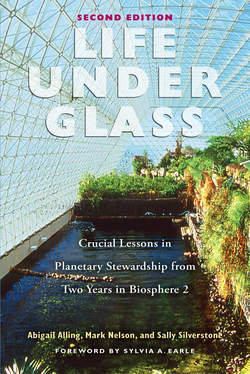Читать книгу Life Under Glass - Марк Нельсон - Страница 19
На сайте Литреса книга снята с продажи.
THE HUMAN DRAMA: LIVING WITH JUST SEVEN OTHER PEOPLE
ОглавлениеOur greatest challenge was ourselves, humans, both within the experiment as well as outside. The 1991 to 1993 Biosphere 2 closure was a human isolation experiment that had never been done before. Boldly, the crew signed up for the two-year journey knowing that this would be a formidable feat of endurance and without a doubt we would face challenges, both personally and collectively, that were unpredictable. We had worked together prior to closure for many years, we knew each other well, but we also knew that the isolation and dramatic change in our day-today living would challenge us in ways we had never experienced before.
The experience of the small teams that spend winters in Antarctica, expedition teams, submarine crews as well as astronauts and cosmonauts confirmed that us-them divisions are common in exploration. Once a group of space station cosmonauts, annoyed at Mission Control, cut off radio contact for 24 hours; no questions were asked when they resumed talking to the people on the ground. Another cosmonaut described the extremely tight living conditions of the spacecraft he shared with two other people and dryly noted: “a perfect recipe for homicide!” Fortunately for us, our isolation experiment included wilderness areas, where we could drop out of sight of visitors and other crew alike, as well as spacious private bedrooms and public spaces.
Dr. Oleg Gazenko, Director of the Institute of BioMedical Problems in Moscow and confidant of generations of cosmonauts, was part of the Biosphere 2 Scientific Advisory Committee. He was most interested in the human dimension of Biosphere 2 and spoke with us during and after the experiment. He observed us closely and concluded that the biospherians had done far better than the cosmonauts in adjusting to our new environment, as evidenced by our feeling of freedom and ease with living inside. While some of us quickly adapted physically, feeling in sync with the rhythms of Biosphere 2, by the spring of the second year all eight of us experienced the shift as a team. We had become the Biosphere 2 team and our actions were relaxed, empowered, and coherent.
Dr. Gazenko also underscored the importance of the ethical standards of the Declaration of Helsinki, which requires that human research subjects be repeatedly given the right to leave an experiment at any time. While not a legally binding agreement, but an ethical one, it formed a fundamental experimental guideline for both Mission Control and all eight biospherians. Periodically, we came together to review our commitments individually and collectively. We all agreed that it was by our own choice that we took part in the Biosphere 2 experiment, but we retained the right to leave at any time. This also encouraged us to accept responsibility for difficult times since we all agreed to participate and work together.
Later, during the transition period after our closure was over, most of the bio-spherians reported that for weeks they felt more comfortable working inside the facility than outside. Psychological tests taken while we were still inside, in addition to private interviews held by the head of University of Arizona Medical School’s psychiatry department, showed we were psychologically healthy, with nearly identical profiles amongst both men and women biospherians that closely matched those of other explorers, such as astronauts. One psychologist even told us if he was lost in the Amazon and needed help getting out safely, the eight of us would be his first choice!
Frictions and differences are inherent in any group; it’s human nature. Just imagine being closed in for two years with only seven other members of your family, friends, or fellow co-workers. How well would you get along? The struggle over the future of Biosphere 2 that took place outside during the two years affected us inside, and probably added some fuel to the fire. Additionally, with the world’s attention on us, just like other people in isolated, confined environments, there’s a tendency to exaggerate these difficulties. But there were also plenty of fun and lighter periods, as well as tense periods throughout our two years. Remarkably, through thick and thin, we continued to work and play together. Any feast, morning with our few but precious coffee beans, or other celebration was too valuable to ruin with squabbles. Biosphere 2 was our shared love and passion and all of the biospherians were totally dedicated to making our closure experiment a success and as scientifically fruitful as possible. Our world was also our lifeboat, so subconscious sabotage was unthinkable and never happened. We hope that also becomes a lesson for our situation now as an emerging global community faces very serious climate and resource challenges. It is imperative that people everywhere come to realize that Earth’s biosphere is literally our shared home.
